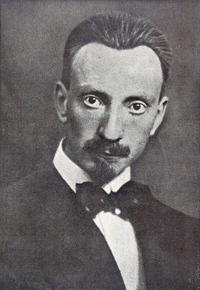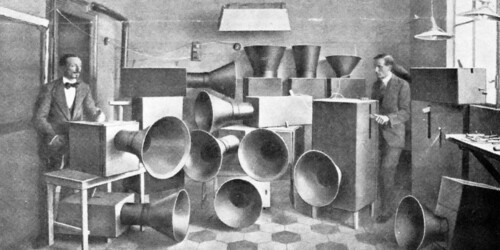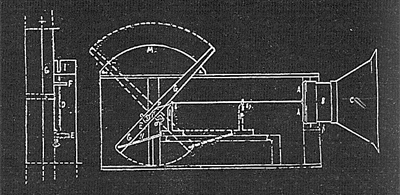No products in the cart.
The Intonarumori: How Luigi Russolo Revolutionized Music with Noise
In 1913, as the industrial revolution reshaped the world, Italian artist and composer Luigi Russolo, a member of the futurist movement, published a manifesto titled “The Art of Noises”. He declared traditional music outdated and proposed a new sonic aesthetic centered on mechanical and urban sounds. To bring his vision to life, Russolo invented the Intonarumori, sound machines that disrupted the conventions of classical music.
Origins: The Art of Noises Manifesto
In his manifesto, Russolo wrote: “We have loved the noise of modern cities… noise surrounds us.” To him, the sounds of modern life—engines, sirens, factories—better reflected the energy of the era than classical orchestras. The futurists, an Italian artistic movement celebrating modernity and speed, encouraged his radical ideas.
The manifesto categorized noise into six types: rumbles, whistles, whispers, screams, rubs, and percussions. These categories became the foundation for the Intonarumori.
The Intonarumori: Machines That Created Noise
The Intonarumori (“noise intoners”) were mechanical instruments. Each machine consisted of a wooden box with a crank, strings, membranes, and levers. Turning the crank or manipulating the levers produced a variety of sounds: low rumbles, high-pitched whistles, or metallic crackles.
These instruments weren’t designed to reproduce musical notes but to create a soundscape that reflected modernity. Each Intonarumori had a specific role: the Ronzatore produced drones, while the Crispator delivered sharp, crackling sounds.
First Performances: Admiration and Scandal
In 1914, Russolo and his futurist colleagues organized a series of concerts in Milan, showcasing the Intonarumori. The audience, accustomed to operas and orchestras, was shocked by these mechanical noises. Reactions were polarizing: some applauded the sonic revolution, while others booed and stormed out.
These performances marked a daring break from classical traditions and laid the groundwork for avant-garde music, influencing later movements like Dadaism and electronic music.
A Legacy That Resonates in Modern Music
Although most of the original Intonarumori were destroyed during World War II, their influence lives on. Composers like John Cage, bands like Kraftwerk, and genres like industrial and techno trace their roots to Russolo’s radical exploration of noise.
In 2009, Italian composer Luciano Chessa rebuilt several Intonarumori for contemporary performances, allowing modern audiences to experience these visionary machines.
Tagged with :






